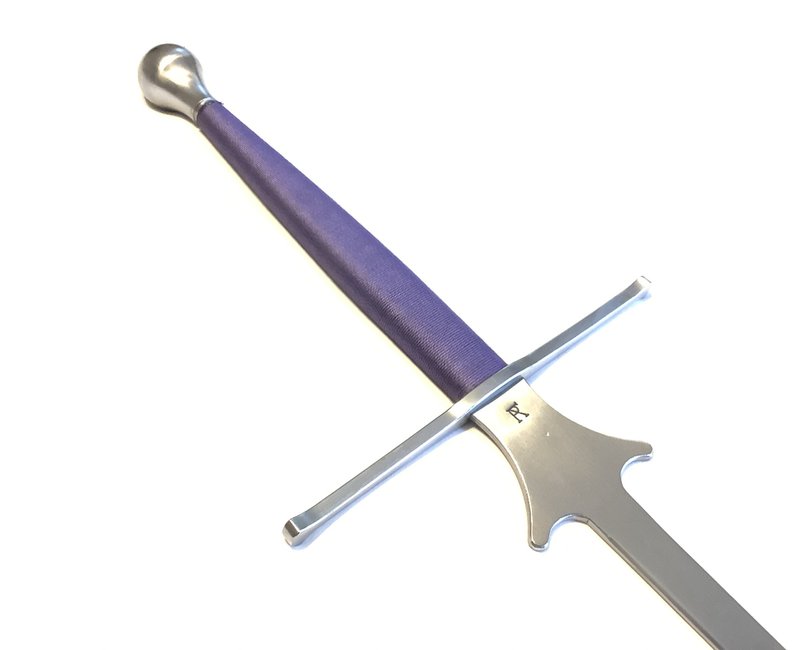
Longsword
The longsword is a two-handed weapon prominent from the late medieval to early Renaissance periods, celebrated for its versatility in combat. It features a straight, double-edged blade typically 90 to 120 cm in length, a protective crossguard, and an extended hilt allowing for a variety of grips and techniques.
Designed for both cutting and thrusting, the longsword is adept at dealing with armoured and unarmoured opponents. Its techniques encompass a range of guards, strikes, thrusts, and counter-manoeuvres, often incorporating grappling and blade control.
The longsword was central to many European martial traditions, particularly in Germany, where masters like Johannes Liechtenauer and Joachim Meyer formalised its use into structured systems of combat, blending martial effectiveness with the artistry of fencing. It remains a symbol of medieval martial skill and chivalric tradition.
Joachim Meyer’s longsword system, detailed in his 1570 fencing treatise, represents a culmination of the German martial tradition, blending practical combat techniques with a structured, sportive approach. His system is rooted in the earlier teachings of Johannes Liechtenauer but is adapted to focus more on controlled, safe fencing suitable for dueling and training.
Meyer’s longsword emphasizes a fluid and strategic style, combining guards (huten), strikes (häue), thrusts (stiche), and displacements (versetzen) to control the fight. Central to his method are the principles of timing (vor and nach), distance (abstand), and blade engagement, teaching fencers to seize initiative while reacting effectively to an opponent’s moves. He also stresses the use of feints and counter-techniques to exploit openings and dominate the engagement.
Unique to Meyer’s system is its structured pedagogy, including set plays, drills, and a focus on fostering adaptability and creativity in combat. It captures the essence of Renaissance fencing as both a martial discipline and an elegant art form.
Longsword forms part of our regular Thursday night class sylabus